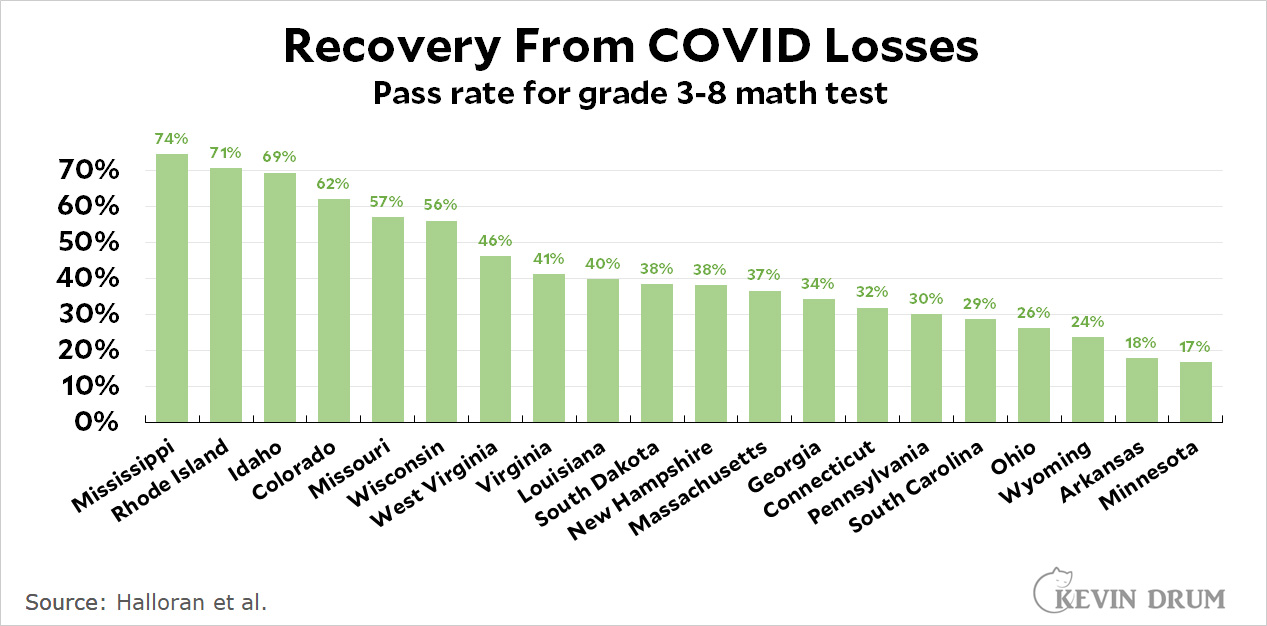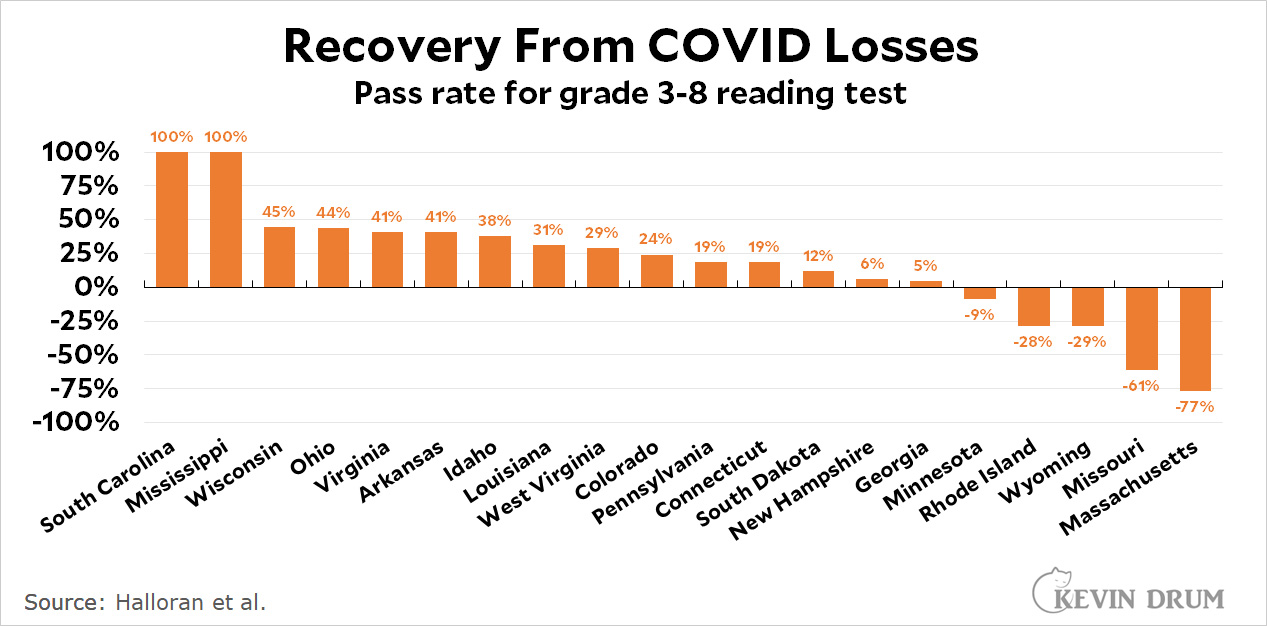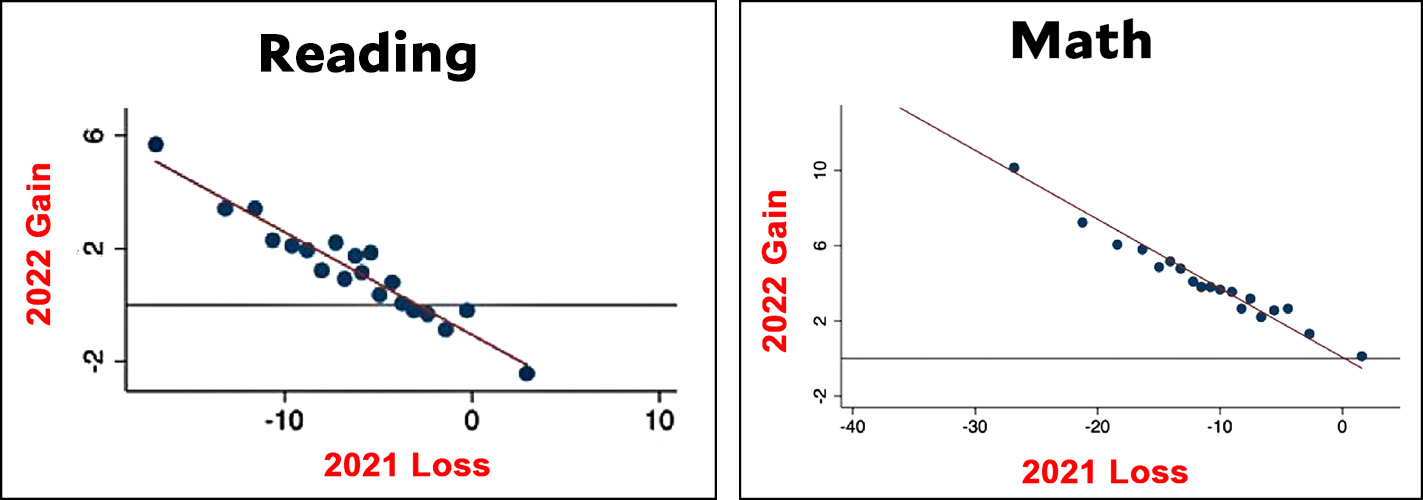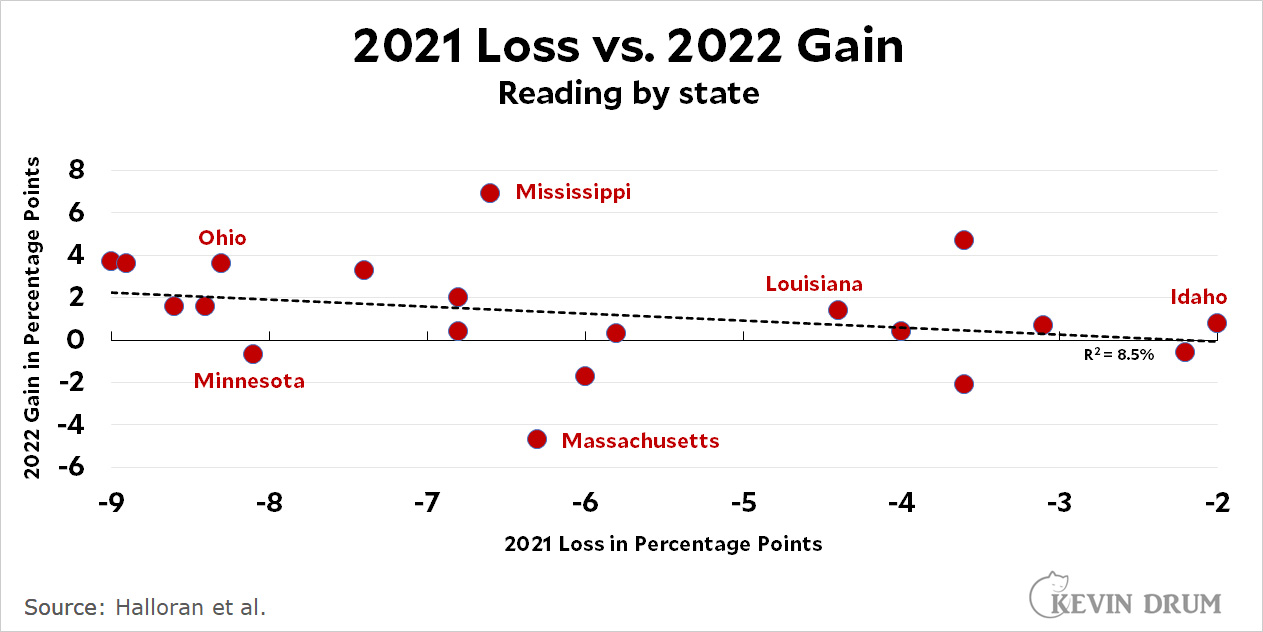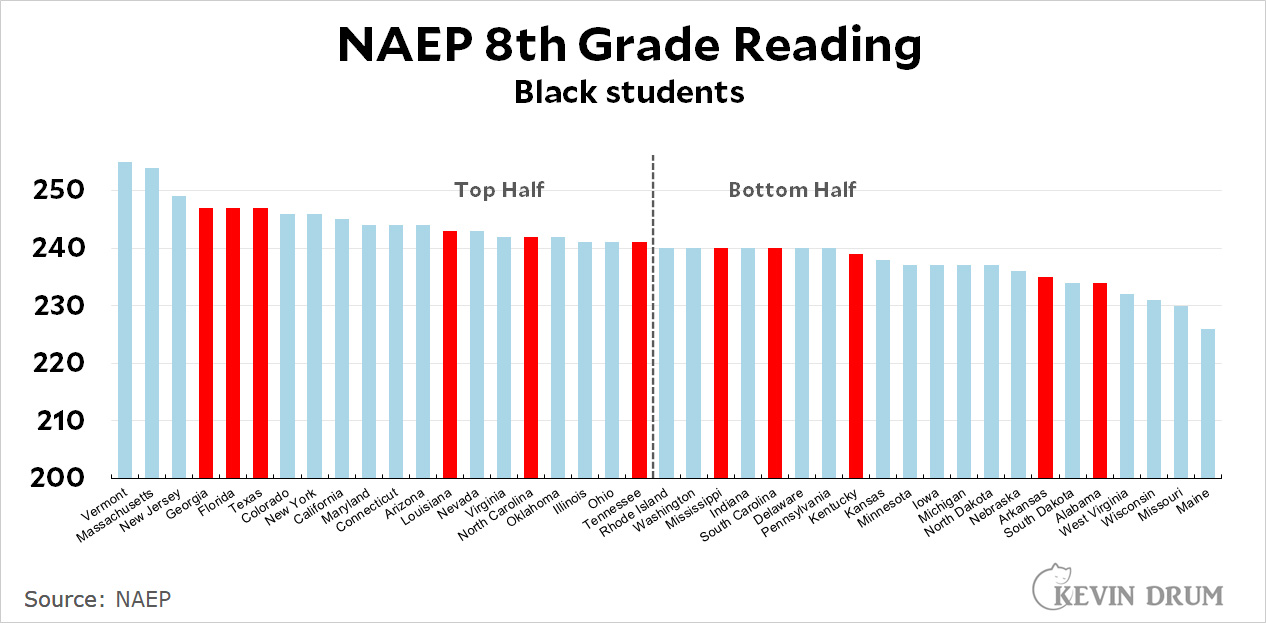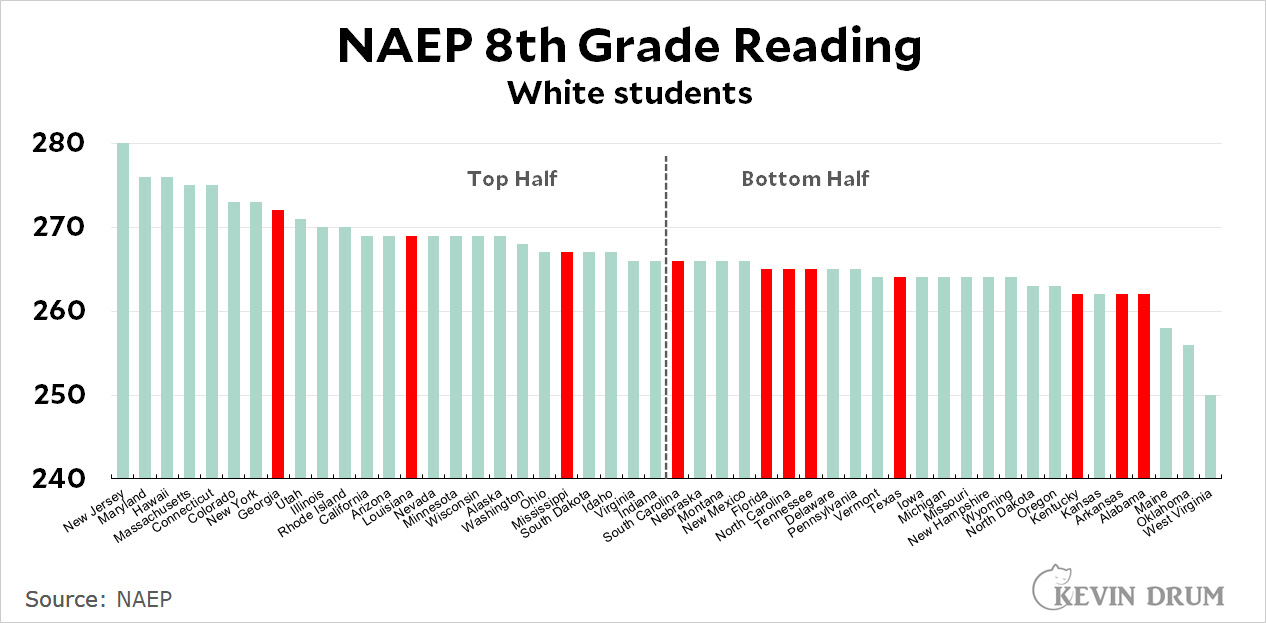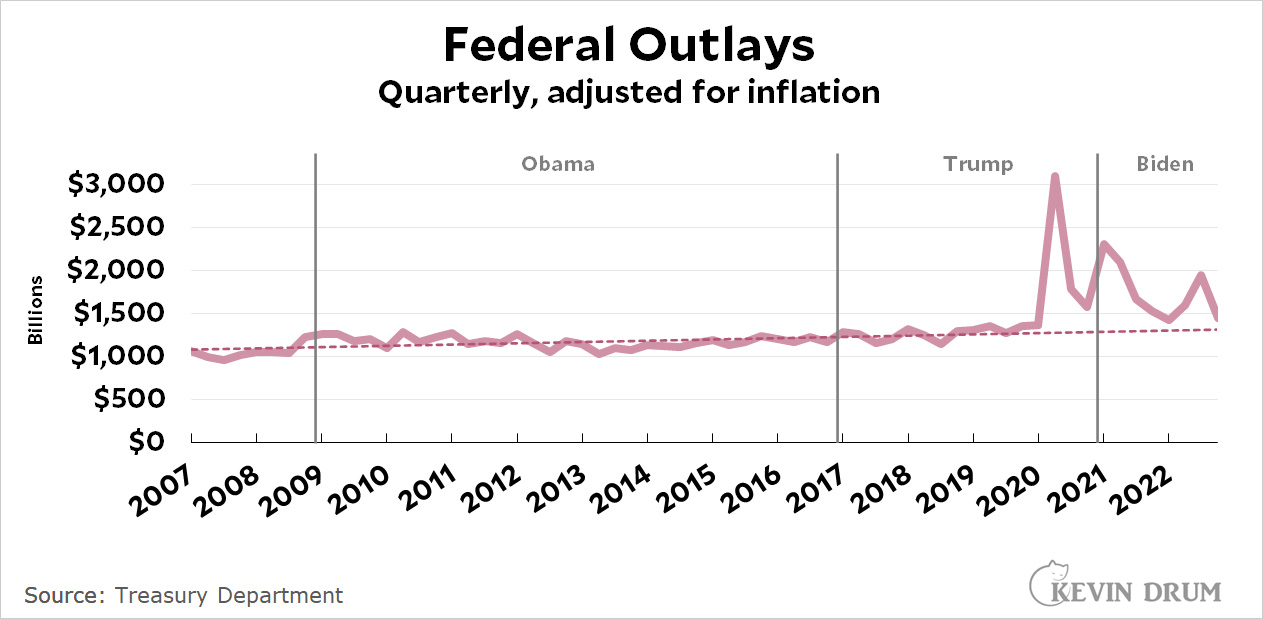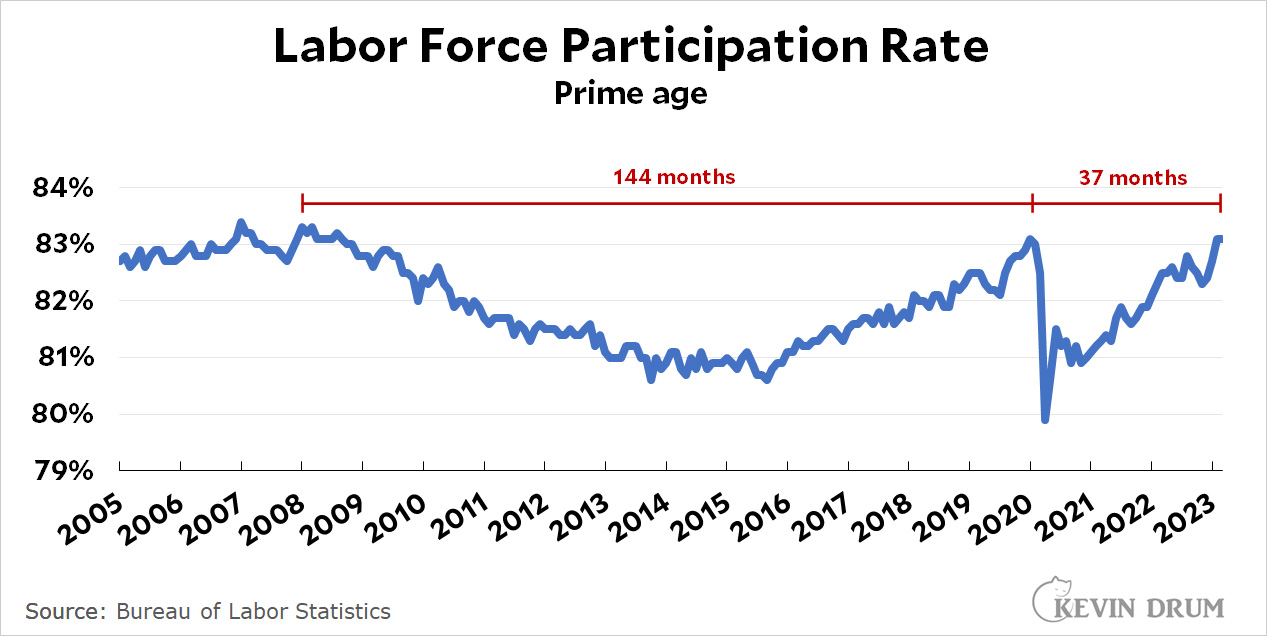The Washington Post reports that consumers are still feeling battered by inflation:
Although inflation has slowly cooled from last summer’s highs, price pressures continue to feel like an uphill battle for consumers, politicians and policymakers alike. Many say recent strides have been too spotty to offer much relief, even as annual price growth has slowed from 9.1 percent to 5 percent.
It's actually better than that. Since June of last year the price level has risen 2.4%. That's a 3.2% annual rate. For the average person, this is indistinguishable from the "normal" rate of 2%.
So why does inflation still seem so troublesome? The answer is simple: that 3.2% figure is a combination of 7.2% for food and 2.6% for everything else. This increase in the supermarket, where shoppers are really paying attention, overwhelms everything else.
Added to that is our preoccupation with whatever individual food happens to be in shortest supply. Right now the big story is eggs, and news outlets are still running stories about the egg crisis even though the price of eggs has fallen for the past two months:
 Still, the price of eggs is up by a third over the past year, and that has a bigger impact on most people's perceptions than a blog post telling them that overall inflation has been running at 3.2% for the past nine months.
Still, the price of eggs is up by a third over the past year, and that has a bigger impact on most people's perceptions than a blog post telling them that overall inflation has been running at 3.2% for the past nine months.






